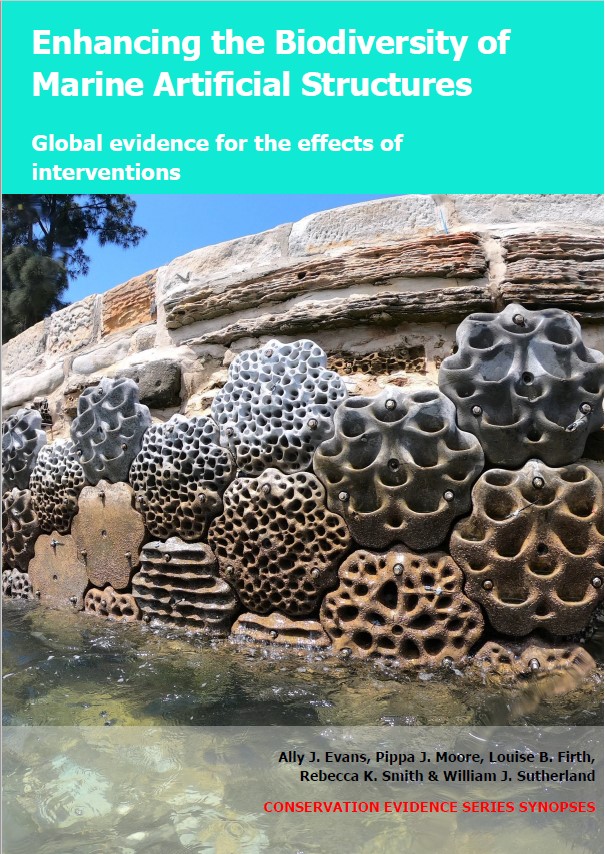Cease or alter maintenance activities on subtidal artificial structures
-
Overall effectiveness category Awaiting assessment
-
Number of studies: 2
View assessment score
Hide assessment score
How is the evidence assessed?
-
Effectiveness
not assessed -
Certainty
not assessed -
Harms
not assessed
Study locations
Supporting evidence from individual studies
A replicated, randomized, controlled study in 2007–2008 on a subtidal swimming-enclosure net in Sydney Harbour estuary, Australia (Harasti et al. 2010) found that enclosure-net panels cleaned only along the top section supported a higher abundance of seahorses Hippocampus abdominalis and Hippocampus whitei than panels cleaned only along the bottom or from top-to-bottom. Over four months, enclosure-net panels cleaned only along the top supported more seahorses (20% of original abundance) than panels cleaned along the bottom (5%) or from top-to-bottom (3%). Maintenance activities were altered on a polypropylene swimming-enclosure net (length: 150 m; height: 3–4 m from sea surface to seabed; mesh size: 100 mm) in November 2007. Net panels (4-m sections) were either cleaned along the top only (surface to 1 m depth), the bottom only (seabed to 1 m above), or from top-to-bottom (surface to seabed). There were four panels of each treatment, randomly arranged along the net. Seahorses were removed during cleaning then replaced in the same position, while all other organisms were scraped from the net. Some panels were left uncleaned but this treatment was not considered a feasible conservation action since the weight of the net could cause it to break or sink. Eleven seahorses on each panel were tagged and monitored over four months.
Study and other actions testedA replicated, paired sites, controlled study in 2008 on eight subtidal pontoons in the Delaware Inland Bays, USA (Marenghi et al. 2010) found that reducing the frequency of cleaning activity did not increase the survival or growth of transplanted oysters Crassostrea virginica on floats attached to the pontoons, nor did it alter the non-mobile invertebrate, mobile invertebrate and fish community composition or increase their species diversity, richness or abundance on and around floats, but it did increase the macroalgal abundance. Data for all comparisons were reported as statistical model results. Over four months, transplanted oyster survival and growth was similar on floats cleaned every four or two weeks. The same was true for the overall community composition, and the species diversity, richness and abundance of non-mobile invertebrates and of mobile invertebrates and fishes on and around oyster floats. The abundance of macroalgae was higher on floats cleaned every four than every two weeks. Maintenance activities were altered on floats holding transplanted oysters attached to pontoons during June–September 2008. Hatchery-reared oysters (61 mm average length) were transplanted into wire baskets (25 mm mesh size) submerged 0.2 m beneath plastic floats (1.0 × 0.7 × 0.3 m) and attached to pontoons. One float with oysters (6 l) and one without were attached to each of eight pontoons in June 2008. Floats were cleaned with a freshwater hose every four weeks on four pontoons and every two weeks on four. Oyster survival and growth was monitored, non-mobile invertebrates on oyster shells were counted, and mobile invertebrates and fishes on and around floats were netted (3 mm mesh size) and counted over four months.
Study and other actions tested
Where has this evidence come from?
List of journals searched by synopsis
All the journals searched for all synopses
This Action forms part of the Action Synopsis:
Biodiversity of Marine Artificial Structures
Biodiversity of Marine Artificial Structures - Published 2021
Enhancing biodiversity of marine artificial structures synopsis





)_2023.JPG)














